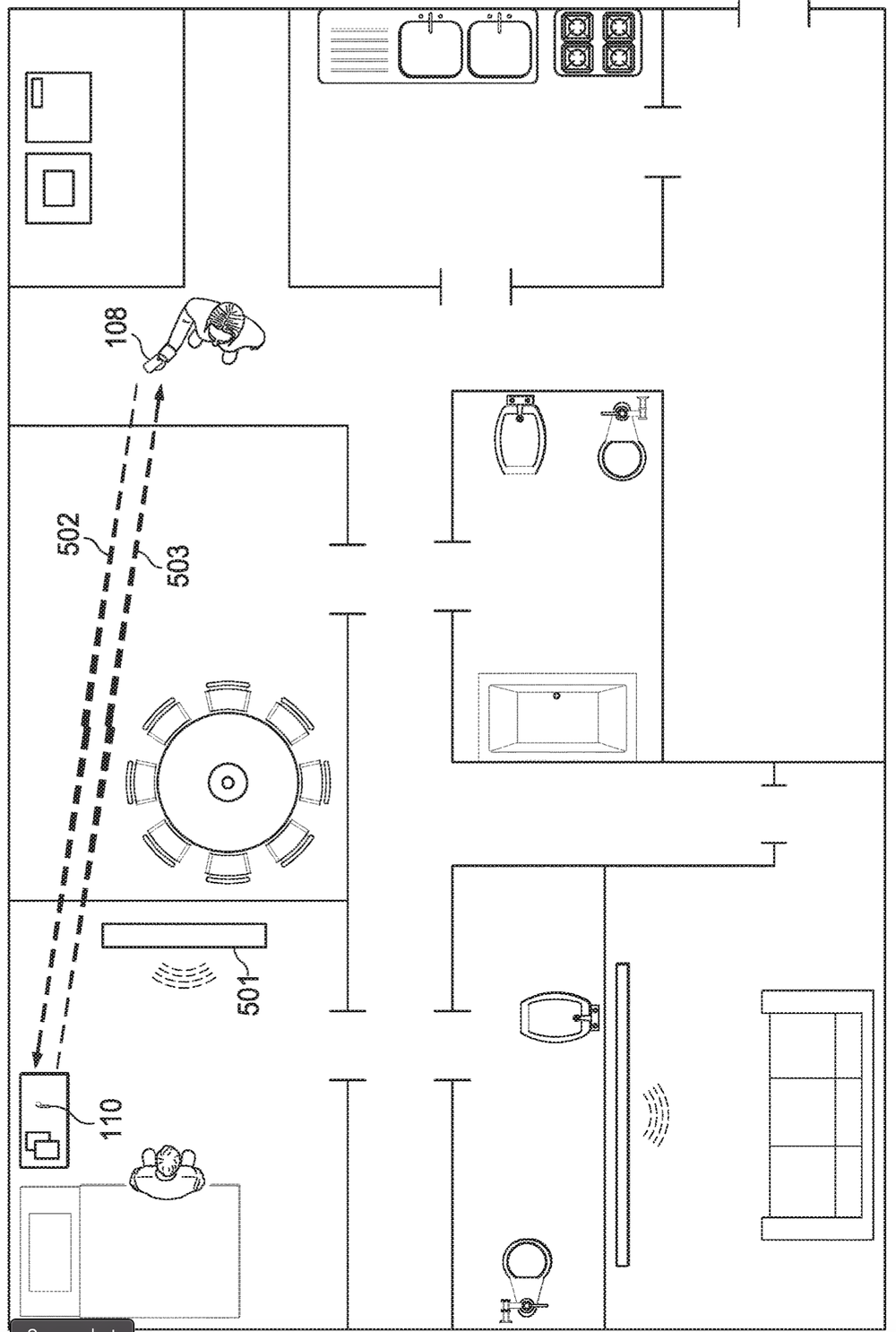A newly granted patent (number 10,771,898) shows that future Apple devices ay use sound outside the range of human hearing to “talk” to each other. This could be useful in, among other things, finding misplaces iPhones, iPads, AirPods, Apple Watches, and Macs.
Wireless devices — such as smart phones, tablets, earbugds, headphones, smart watches, head-mounted display, etc. — often include a client app that allows a user to access a network-based service for remote location-tracking of the device if it’s been lost or stolen. The user can invoke a “lost mode” remotely through a server computer using another computer or device to flag the device as lost or stolen. If the wireless device includes positioning technology, the device can be configured to report its last location to the server computer, which is displayed by the service on a map presented to the user.

The problem, per Apple is that often wireless devices are used with wireless accessory devices that can’t determine their location and can’t communicate with a remote tracking services over a wide area network, such as the Internet. This means that the currently available remote location-tracking services can’t track lost or stolen accessory devices.
Apple’s idea is to use filtered sound at frequencies higher than the maximum hearing range for one device to “find” another. Of course, it seems that this would only work if the devices are within reasonably close proximity to each other, and less so if they’re far apart.
Here’s the summary of the invention: “Systems, methods, devices and non-transitory, computer-readable storage mediums are disclosed for location-tracking wireless devices. In an embodiment, a method performed by an electronic device comprises: playing, or initiating the playing of, a sound through a loudspeaker of an accessory device via a communication link. The sound is played at a specified frequency that utilizes a frequency response of the loudspeaker (or loudspeaker plus speaker enclosure).
“The sound is received through two or more microphones of the electronic device and filtered by one or more filters. The one or more filters are configured to pass the sound at or around the specified frequency and to reduce masking of the sound by ambient noise. The filtered sound is associated with direction data generated from sensor data provided by one or more inertial sensors of the electronic device. In another embodiment, the specified frequency is higher than the maximum human hearing range.”
